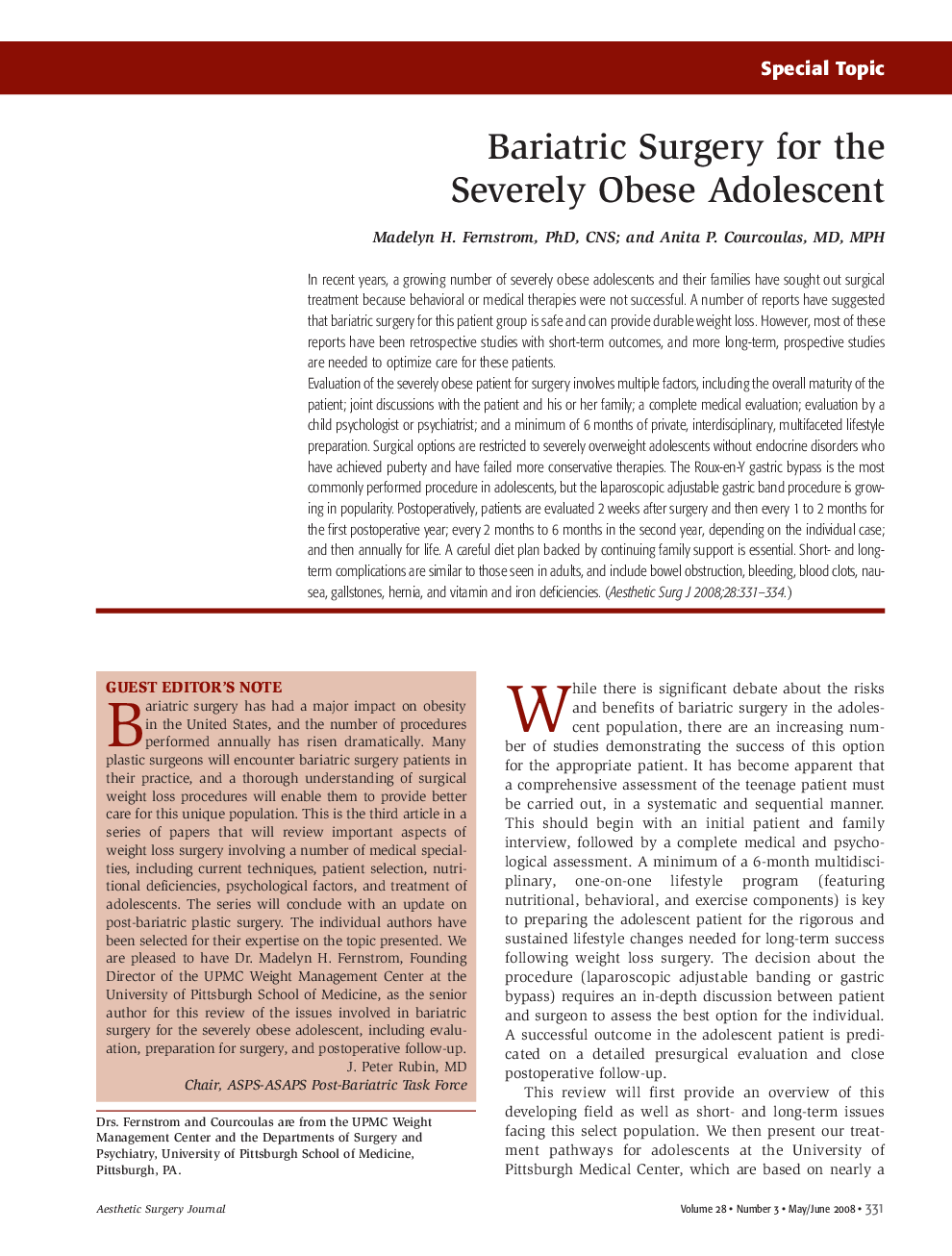| Article ID | Journal | Published Year | Pages | File Type |
|---|---|---|---|---|
| 4277758 | Aesthetic Surgery Journal | 2008 | 4 Pages |
Abstract
Evaluation of the severely obese patient for surgery involves multiple factors, including the overall maturity of the patient; joint discussions with the patient and his or her family; a complete medical evaluation; evaluation by a child psychologist or psychiatrist; and a minimum of 6 months of private, interdisciplinary, multifaceted lifestyle preparation. Surgical options are restricted to severely overweight adolescents without endocrine disorders who have achieved puberty and have failed more conservative therapies. The Roux-en-Y gastric bypass is the most commonly performed procedure in adolescents, but the laparoscopic adjustable gastric band procedure is growing in popularity. Postoperatively, patients are evaluated 2 weeks after surgery and then every 1 to 2 months for the first postoperative year; every 2 months to 6 months in the second year, depending on the individual case; and then annually for life. A careful diet plan backed by continuing family support is essential. Short- and long-term complications are similar to those seen in adults, and include bowel obstruction, bleeding, blood clots, nausea, gallstones, hernia, and vitamin and iron deficiencies.
Related Topics
Health Sciences
Medicine and Dentistry
Surgery
Authors
Madelyn H. PhD, CNS, Anita P. MD, MPH,
